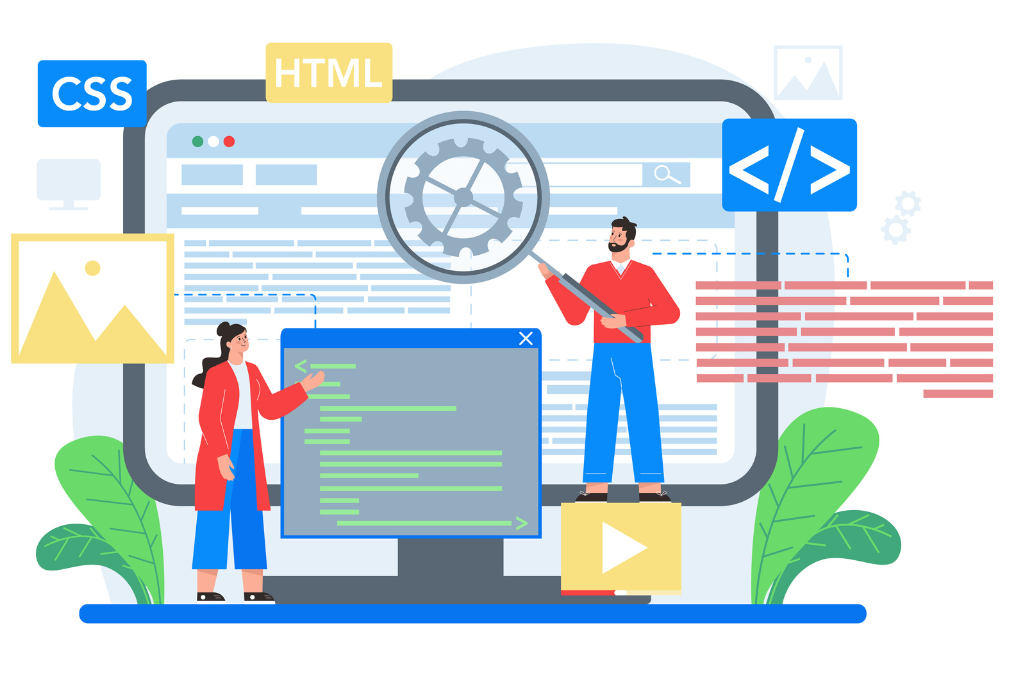If there’s one thing you should know as a new business owner, startup manager, or an existing entrepreneur, it would be that no single prebuilt software can fully cater to your business needs. And in case you get one, as your business is still in its infancy stage, you need to take the right steps.
So, what will you do if suddenly your current off-the-shelve software can’t meet your business needs? You’ll probably hunt for another software that fixes the deficit and be forced to pay a huge subscription fee for monthly maintenance.

The cycle of continuously adopting more and more software as your business grows is inevitable. And that’s why you need custom-made software tailored to your needs and has room for future improvements.
It’s one thing to build great custom software that will make your competitors click their tongues in wonder, and it’s another thing to code up a crappy product that will make you wish you had gone for off-the-shelf software. If you want the former, sit back and read this article.
#1 Figure out your needs and possible concerns.
First off, there’s no building without planning. In case you’re not aware, there are about 26.9 million developers globally. Imagine if each of these developers releases a product once a year; we will have close to 30 million applications annually.
Interestingly, only a tiny percentage of this software makes it to the next quarter. So if you build in a hurry, you’re only risking a quicker software crash or lost relevance. And that’s why you must outline your plans for the software you want to build.

Not just needs you also need to highlight the challenges you want the custom software to solve. If you have difficulty with navigation or user interface when using an off-the-shelf product, you should ensure your custom program addresses this issue.
For example, you should be able to answer questions such as:
- Will this custom software save me the cost of paying for another software?
- Does adopting custom software give my business more leverage?
- Does it cost more to run this custom software than when I go for multiple off-the-shelf products?
- What are the tasks that my custom software should handle?
- How far should this software go in competing with other world-class non-custom programs?
- Can I integrate it with other software?
There are more questions you should ask, including the goals and objectives you want to achieve with the proposed custom software. All these questions and planning will help you set the stone in the right place for a smooth roll.
By the time you’re done outlining the major and minor details, you should have a holistic view of what you want or do not want in the program. Another reason this step is essential is that your developer needs a roadmap of how to go about building your next product. And that’s impossible without a plan or an agreed proposal.
#2 Create product prototypes
Prototypes are as important as the software itself, and it’s like building a playground to experiment with how your software will look like. Also, prototypes allow you to interact with the software before coding and reduce post-development errors.
When it’s time to create prototypes, you can assign them to your in-house UI/UX design teams or outsource them if you don’t have one. Most software development or off-the-shelf agencies have their designers. So it’s a matter of including the cost in your total budget.
Review your prototypes with other stakeholders, if any. Discuss possible edits or changes and ask for another prototype before kickstarting the development. If you want to handle the prototype personally, use design tools like Procreate and its enormous library of features like the Procreate curly hair brush.
#3 Estimate necessary resources and budget
Now that we have our plan, questions, challenges, needs, and a roadmap in place, you need to estimate the cost and resources that will be needed. Talking about resources, we’re looking at the development team - whether in-house or outsourced. You can also extend it to the database for launch, the graphic design team for prototypes, product testing tools, a review community, and many more.

The product development and management budget should also be documented, and other logistics must be accounted for. And when everything is in place, you can move on with other things, such as software development and testing.
#4 In-house developers or outsourcing
Regarding developing personalized custom software for your business, you need to decide if you’ll work with your in-house developers or outsource it to a software development agency. Both options have pros and cons, so feel free to take a side.
But if you’re finding it difficult to choose, you can go for an in-house development team if you have one. The reason is that it’s much easier to coordinate with them and align your goals into an agreed focal point. Your in-house developers are more familiar with your brand’s identity, tone, voice, core messages, and other minor details.

Conversely, software development outsourcing might give you the best value, especially if you don’t have an in-house team or their expertise can not cater to your product requirements. Please note that there’s nothing wrong with outsourcing. Development agencies have more experience and have worked on many projects, giving them more upper hand.
Lastly, consider the cost difference. Don’t try to save some bucks if your in-house developers won’t do a good job. But if your in-house team can do the job better, be cost-efficient.
#5 Test and compare
Fast-forward to the post-development stage. You need to test your new custom software and see if it meets your requirements. Countless product testing tools for reviewing programs and fishing out possible coding or architectural errors exist.
Explore the user interface, navigability, integrated features, and software response. When you’re done with personal testing, compare it with other software on the market. Let’s say your software works as a CRM and cloud storage platform. Compare these functionalities and make sure yours meets the preset standards.

When that’s done, get a few people to test your product. Preferably, you should start with your employees or work partner to close friends or work for the community. For example, the CEO of SEOwind, Tom Winter, provided complete access to his SEO software after development in return for an honest review. If your business operates in the service sector, you might also compare your custom-built solution with existing field service management software to see how well it meets industry-specific needs.
With these reviews, he was able to build a better product and optimize it for better use. You might be unable to do the same thing, such as giving out a time-limited offer, especially if it is only built for your business. But you can use the product for multiple real-time activities and compare the results to the ones you get from another software.
Finally, software development is multistep and progressive. That means you can update new features and remove lagging add-ons or functionalities. So don’t be afraid to roll it out instead of waiting for perfection.
Conclusion
Software development is a whole journey on its own and doesn’t end with just coding. Testing, reporting, collecting data through analytical tracking, and implementing possible updates are all essential to building excellent custom software that works great every time.
So when you’re ready to embark on custom software development, plan and figure out what you need the software to address. Estimate your budget, and decide if you will outsource or work with your in-house team. After launching, test and review to cross out developmental errors or other possible issues.


























